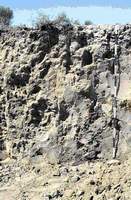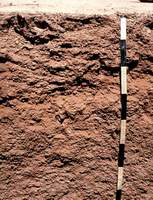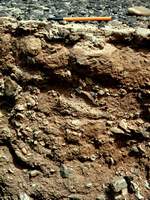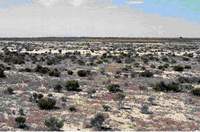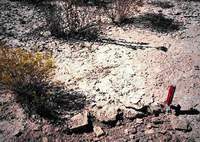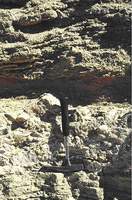Gypsisols
Share on:
Gypsisols occur in the dry parts of the semi-arid regions where evapotranspiration exceeds considerably the precipitation, and where a source of sulphate is present to form gypsum (CaSO4.2H2O).
Characteristics
Soils having a (petro-)gypsic horizon (horizon with accumulation of secondary gypsum) or 15 percent or more gypsum accumulated under wet conditions. They have no diagnostic horizons other than an ochric or cambic horizon, an argic horizon permeated with gypsum or calcium carbonate, or a (petro-)calcic horizon below the gypsic horizon.
Contact:
